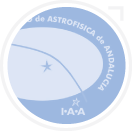Cooling of the Martian thermosphere by CO2 radiation and gravity waves: An intercomparison study with two general circulation models
Observations show that the lower thermosphere of Mars (∼100–140 km) is up to 40 K colder than the current general circulation models (GCMs) can reproduce. Possible candidates for physical processes missing in the models are larger abundances of atomic oxygen facilitating stronger CO2 radiative cooling and thermal effects of gravity waves. Using two state-of-the-art Martian GCMs, the Laboratoire de Météorologie Dynamique and Max Planck Institute models that self-consistently cover the atmosphere from the surface to the thermosphere, these physical mechanisms are investigated. Simulations demonstrate that the CO2 radiative cooling with a sufficiently large atomic oxygen abundance and the gravity wave-induced cooling can alone result in up to 40 K colder temperature in the lower thermosphere. Accounting for both mechanisms produce stronger cooling at high latitudes. However, radiative cooling effects peak above the mesopause, while gravity wave cooling rates continuously increase with height. Although both mechanisms act simultaneously, these peculiarities could help to further quantify their relative contributions from future observations.































